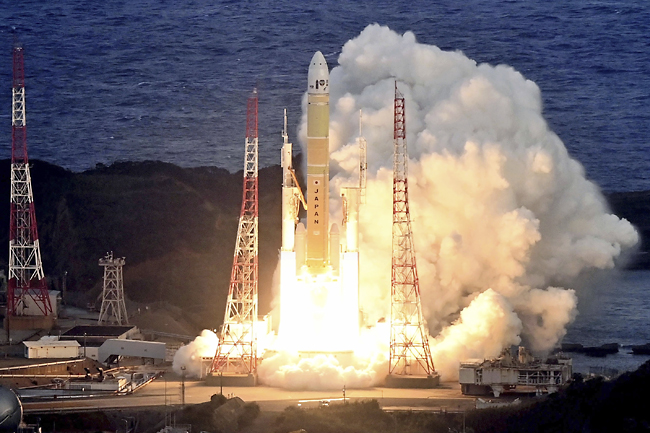TOKYO (AP) – Japan yesterday launched a navigation satellite on its new flagship H3 rocket as the country seeks to have a more precise location positioning system of its own.
The H3 rocket carrying the Michibiki 6 satellite successfully lifted off from the Tanegashima Space Center on a southwestern Japanese island. Everything so far has been as planned, the Japan Aerospace Exploration Agency, or JAXA, said.
Japan currently has the quasi-zenith satellite system, or QZSS, with four satellites for a regional navigation system that first went into operation in 2018. The Michibiki 6 will be the fifth of its network.
Michibiki’s signals are used to supplement American GPS to improve positioning data for smartphones, car and maritime navigation and drones. Japan plans to launch two more navigation satellites to have a seven-satellite system by March 2026 in order to have a more precise global positioning capability without relying on foreign services, including the United States, according to the Japan Science and Technology Agency. By the late 2030s, Japan plans to have an 11-satellite network.
Yesterday’s launch, delayed by one day due to the weather, was the fourth consecutive successful flight for the H3 system after a failed debut attempt last year.




